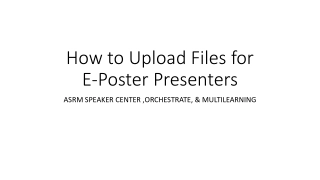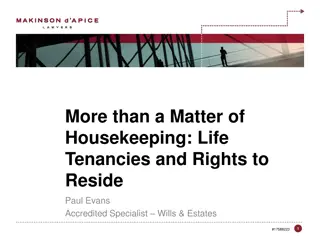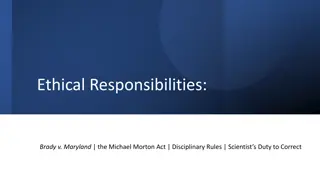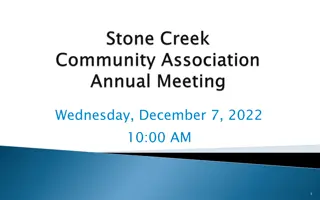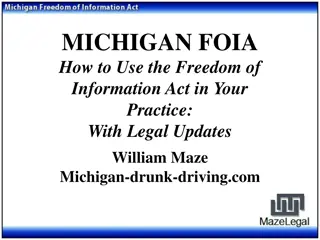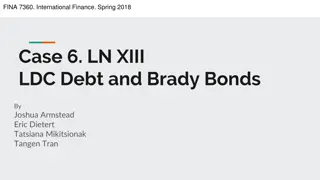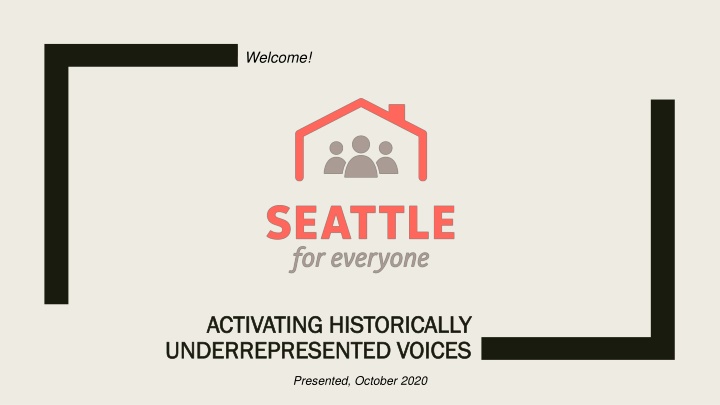
Empowering Communities Through Housing Policies in Seattle
Discover the history and objectives of the Housing Affordability and Livability Agenda (HALA) in Seattle, aimed at creating 50,000 new homes with a focus on affordable housing. Explore innovative approaches and examples like Mandatory Housing Affordability and Accessory Dwelling Units (ADUs), contributing to housing diversity and community support in Seattle.
Download Presentation

Please find below an Image/Link to download the presentation.
The content on the website is provided AS IS for your information and personal use only. It may not be sold, licensed, or shared on other websites without obtaining consent from the author. If you encounter any issues during the download, it is possible that the publisher has removed the file from their server.
You are allowed to download the files provided on this website for personal or commercial use, subject to the condition that they are used lawfully. All files are the property of their respective owners.
The content on the website is provided AS IS for your information and personal use only. It may not be sold, licensed, or shared on other websites without obtaining consent from the author.
E N D
Presentation Transcript
Welcome! ACTIVATING HISTORICALLY ACTIVATING HISTORICALLY UNDERREPRESENTED VOICES UNDERREPRESENTED VOICES Presented, October 2020
Introductions Introductions: : 1. Name, pronouns 2. What interested you in this meeting today? 3. What potential housing policies or approaches are you most excited about?
History of Seattle for Everyone In 2015 HALA started with a 28-member committee established by the mayor and city council of Seattle and tasked with devising a comprehensive response to the city s soaring rents and home prices S4E brought together developers, urbanists, environmentalists, affordable housing providers, labor unions, and more in support of this consensus plan and to mobilize neighbors.
HALA: Objectives/Outcomes (1/2) GOAL: 50,000 new homes, with 20,000 income-qualified affordable homes, over the next decade MORE RESOURCES FOR AFFORDABLE HOUSING MORE RESOURCES FOR AFFORDABLE HOUSING more subsidy, through a range of revenue generating mechanisms) MORE HOUSING MORE HOUSING (maximizing opportunities in the market) MORE SUPPORTS FOR COMMUNITIES MORE SUPPORTS FOR COMMUNITIES strategic preservation of housing and protections for vulnerable tenants and homeowners) MORE INNOVATION MORE INNOVATION the streamlining of systems and related reforms to cut the costs of housing)
HALA: Objectives/Outcomes (2/2) Examples: Mandatory Housing Affordability ( MHA ), ensures all new residential developments will include a certain percentage of affordable housing units while also allowing more housing overall to be built in Seattle s Urban Centers & Villages Passed citywide in Spring of 2019 ADUs / DADUs, removes barriers to building accessory dwelling units, providing more housing options in every neighborhood Ordinance passed in July, 2019 that removed occupancy requirements, removed off street parking requirements, reduced minimum lot size, increased maximum size, allowed two ADU s on one lot, etc. 2016 Housing Levy, voter approval campaign for $290m over 7 years for homeownership assistance, homelessness prevention, and affordable housing preservation. Still in effect MFTE @ WA State and Seattle Still in effect
Our Values We unite around the conviction that everyone, regardless of income or background, should have access to safe, stable, and affordable housing. We believe in a Seattle for Everyone. Create & Preserve More Housing Options in Every Create & Preserve More Housing Options in Every Neighborhood Neighborhood Support Low Support Low- - and Middle and Middle- -Income Affordability Income Affordability Support Equitable Development Support Equitable Development
Barriers to Changing Policy (1/2) Community organizing, NIMBYism, often co-opts the language of progressive groups Neighborhood choice, Community voice, etc. Well-funded legal challenges esp. with SEPA appeals anyone with $85 to spare for a filing fee and the wherewithal to make their case can appeal by arguing that the [environmental] impacts are in fact significant and merit a full review. Earned media onslaught (social media, shares, etc.) The Seattle Times reported that indicated that Seattle then, with existing zoning, had more than enough zoned capacity for all the housing it would need far into the future therefore no need for upzones at all
Barriers to Changing Policy (2/2) Lobbying pressure in opposition that ultimately succeeded in reducing some of the proposed zoning changes at Council Opponents rarely oppose the policy outright, but seek to sabotage it through amendments MHA: Despite the new hefty fees or performance requirements put on these zones whether the upzone was utilized or not by the builder were widely described as developer giveaways NIMBY s opposed density, activists outside our group pushed for infeasibly high MHA fees; both would have limited policy effectiveness to meet HALA goals Note: I ve learned to emphasize More housing in all neighborhoods to clear up that growth should happen throughout the city NOT be concentrated in low-income neighborhoods
New groups of people mobilized in most neighborhoods These YIMBY s weren t a big factor in Seattle politics previously S4E Organizing Assets: Leaders & Champions (1/4) We had champions in government agencies and elected offices Policy window through HALA Leaders emerged in neighborhoods to self- organize for those community meetings and to advocate for micro-issues Distributed structure in neighborhoods
We united under shared values Equity-based coalitions; Growth alone isn t enough. There must also be a greater unifying vision S4E Organizing Assets: Shared Values (2/4) Production targets were key to cohesion Funding $$$ over time period # of units over time period Solutions-focused vs. strictly ideological what will get us to our shared goals together? Refocused on justice and fairness in outcomes What will guarantee X funding and Y units for affordable housing within Ztime?
Maintained diverse network; groups & individuals with shared concerns but differing philosophies Maintain honesty about interests, forces in play, and motivations for decisions It s ok to disagree on some issues as long as we stay aligned on the large goals stay aligned on the large goals S4E Organizing Assets: OK to Disagree (3/4) as long as we Access to expertise from different technical backgrounds and professions Structure: a.) Coalition & b.) Neighborhood Outreach Committee Different constituency within Neighborhood Outreach Committee allowed people to align action with S4E goals, even if they didn t want direct affiliation
Relationship building: provided chances outside of direct actions for people to get to know each other S4E Organizing Assets: Preparations (4/4) Developed specific talking points that were distributed for each community meeting Helped present a unified message Encouraged people to share personal stories and experiences where possible Provided testimony coaching meetings (emotional support + food) coaching and support at the
Six Steps to Getting Local Government Approvals (from Non-Profit Association of Northern California) Considers Opposition for new housing and services for low- income people No silver bullets but a proactive and collaborative process can yield positive results
Six Steps to Getting Local Government Approvals 1. The development team meets early to research, assess, & plan in the five key areas outlined (1.) (1.) Organizational reputation, (2.) (2.) capacity to attract broad community support for work, (3.) (3.) previous experience in dealing with local government, (4.) and (5.) (5.) the media. (4.) opponents, 2. Prepare a political strategy that coordinates all your work toward getting needed votes. 3. Prepare a strategy to build active community support for your proposal. 4. Prepare a strategy to work through community concerns and deal with active opposition. 5. Prepare a strategy to protect and use your legal rights. 6. Prepare a public relations/media strategy to send your message to decision-makers and the public.
Common NIMBY Arguments, Community Meetings This is the first we ve heard about it We fully support ___________, but just believe this is not the correct location Why is it our neighborhood s responsibility? What about a ____________? Maybe a park?
Common NIMBY Arguments 1. Development will decrease property values and higher-income earners will move 2. Development will increase crime and other undesirable activity 3. Growth will open the community up to unpalatable land uses and zoning decisions; we ll lose the feel of our neighborhoods i.e. Growth violates community will 4. Why not build further out where land is cheaper? i.e. Why here? 5. Development will increase traffic, overcrowding, and strain on infrastructure
Responding to a NIMBY Educate opponents about the facts regarding feared impacts Humanize the object of fear Provide reassurance by respected authorities Build relationships Take actions to address legitimate fears
Keep addressing concerns from neighbors in good faith until only unreasonable opposition remains
What Other Cities have Done Successfully Portland, OR Minneapolis, MN Cambridge, MA
Passed: 8/12/2020 How? +Built on state law allowing duplexes in cities >10k +People showed up! 6 pro-housing advocates showed up for every 1 anti- housing advocate
Cambridge: Affordable Housing Overlay AHO passed: 10/5/2020! Problem: City was putting almost all new housing in formerly industrial areas Now: Four story affordable apartments in all neighborhoods, with additional floors in business districts Change the script: Many progressives defend exclusionary single-family zoning claiming that new fourplexes in affluent neighborhoods will just be luxury housing. But the AHO changes the politics of housing development in urban America. Now, those who say they only support 100% affordable housing have no excuse for not passing a local version of the AHO. https://beyondchron.org/will-local-progressives-still-back-exclusionary-zoning/
QUESTIONS? What are some of your housing and land use goals in Bellingham? What is the nut to crack ? Is there a unifying value that can cohere these goals, especially beyond your group? What organizing strength do you have already? What strengths could you build and how? Are there any barriers or counter-arguments that you can anticipate from opposition? What are some possible responses? Do you have any possible champions in government, community, business, non-profit, philanthropy, etc.? Do they have any legislation or other efforts where you could find alignment and build relationship with them?


